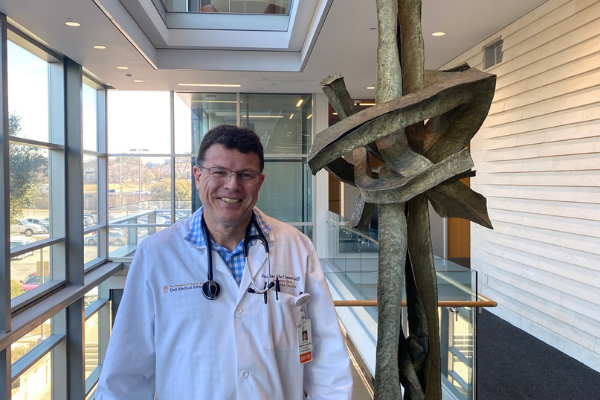
Before COVID-19 came along, Austin family physician Jonathan MacClements, MD, spent most of his time recruiting residents, training them, and creating more residency spots so there will be more physicians in the future.
But since March 2020 – when COVID-19 first spread in the U.S. – the pandemic has posed one distraction after another to those important tasks, says Dr. MacClements, a consultant to the Texas Medical Association’s Council on Medical Education and associate dean and designated institutional official of graduate medical education (GME) at The University of Texas at Austin Dell Medical School.
Early on, for example, COVID-19 forced residency programs to upend the way they interview candidates, he says. Overnight a totally in-person process switched to one that is now almost completely online.
“The first year [of the pandemic] was extremely challenging as people adapted to the new interview process,” he said. “Everybody was figuring out how to schedule the interviews [and] how to create a comfortable interview environment so that both parties could determine if this was the candidate they wanted.”
Residency program directors and fourth-year medical students have mostly made that new process work, he says. But as other physicians also have seen, each time medical educators adapted to COVID-19, the disease presented new challenges. One of the latest came in early January when the omicron variant affected a substantial number of the 340 residents he oversees.
“At any one time, we had 30 to 40 residents out with omicron,” he said.
Fortunately, most were not terribly sick, Dr. MacClements says. But since they tested positive, they could not treat patients for five days. That forced Dell Med and its hospital partner Ascension Seton to declare an emergency with the Accreditation Council for Graduate Medical Education (ACGME), the organization that oversees standards for residency training.
“That allows us to move residents around [to areas outside their specialty] and takes the stress off of meeting case logs,” he said. “It allows us to use residents in a way that gives us good patient care.”
But COVID-19 has meant more than just reacting to the latest crisis, Dr. MacClements says. Dell Med and Ascension Seton also have been under deadline pressure to create new residency slots. Once a hospital begins the process of creating residency programs, the Centers for Medicare & Medicaid Services gives it five years and then caps the number of residency positions the agency will fund. The hospital has to find another way to fund any programs or positions created after that.
Dell Med and Ascension Seton have until June 2023 to create all of their spots, Dr. MacClements says. That means the time-consuming work of setting up programs, meeting ACGME standards, hiring staff, and training new residents cannot slow down.
“We got 22 new residency programs approved by the ACGME [in that time],” he said. “In the midst of all things COVID, we managed to advance the GME strategy for Central Texas to ensure that our communities have sufficient well-trained physicians.”
At the pace Dell Med and Ascension Seton are on, their residency programs will grow from about 340 residents today to about 440 by 2027, he says.
Dr. MacClements says COVID-19 also has helped spur needed change in patient care. In 2018, Ascension Seton created nurse-resident councils at Dell Seton Medical Center to improve communication among everyone involved in treating patients. The councils include not just residents and nurses but also pharmacists, physical therapists, case managers, housekeeping staff, and others.
When the pandemic hit, these teams went from being an experimental initiative to a vital resource for care, Dr. MacClements says. Medical professionals knew very little about COVID-19, and open talk about the best types of care was badly needed.
“I think COVID really drove that conversation,” he said. “[These teams] are absolutely integral to making decisions about patient care and bringing issues forward. The COVID pandemic has moved us closer toward operationalizing this interprofessional learning environment and truly creating a team of teams.”